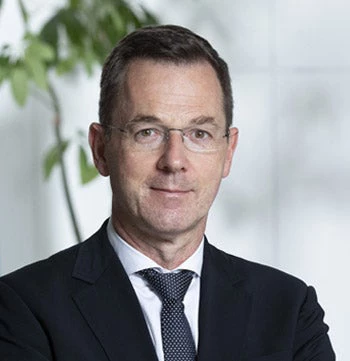 Deux petites exploitantes à Kaolack, au Sénégal. Photo: Daniella Van Leggelo-Padilla / Banque mondiale
Deux petites exploitantes à Kaolack, au Sénégal. Photo: Daniella Van Leggelo-Padilla / Banque mondiale
More than one-third of people in Senegal work in agriculture, many tending to small plots of millet, rice, and ground nuts. Despite their importance to Senegal’s economy, these farmers often cannot afford the fertilizers and high-yield seeds so crucial to improving productivity.
To change that, one of Senegal’s leading microfinance institutions, Union des Mutuelles Alliance de Crédit et d'Epargne pour la Production (UM-ACEP), has long been providing loans to farmers. But it faces a challenge — one I have seen all too often in Sub-Saharan Africa. To reach more farmers, UM-ACEP needs capital, and many financial institutions are hesitant to lend the company money. They fear that UM-ACEPs business is too risky because their customers are smaller businesses with limited experience and undocumented financial performance.
So, IFC has stepped in.
Our organization recently agreed to provide UM-ACEP with $10 million in local currency financing with the support of the International Development Association’s (IDA) Private Sector Window (PSW). The $2.5 billion financing window was launched in 2017 to mobilize private investment in the world’s least-developed places, many of which are in Africa, by offsetting some of the risks.
In the case of UM-ACEP, the IDA PSW support is providing the lender with long-term financing at an affordable rate, allowing them to reach underserved customers. With the financing in hand, UM-ACEP this year is aiming to provide microloans to some 13,000 smallholder farmers.
The UM-ACEP project is one of nearly 30 that the IDA PSW has supported in Africa since the onset of the COVID-19 pandemic. With the continent reeling from a credit crunch and its first recession in a generation, the IDA PSW has been instrumental in helping keep businesses afloat and getting new investments off the ground. Since March 2020, the PSW has provided support to de-risk IFC investments in firms across Africa, including banks, manufacturers, medical clinics, fertilizer producers and farmers.
Along with the death and illness it has wrought, the COVID-19 pandemic threatens to plunge up to 150 million people into poverty globally. Over the last two years, most recently on my visits to countries in the region, I have seen the impact of that on families: job losses, lowered incomes, dwindling savings. As somebody whose job it is to help Africa realize its tremendous potential, it has been heartening to see how the IDA PSW is helping the continent rebound from the pandemic.
Seventy-four of the world’s most-impoverished countries, including 39 African states, are eligible to receive funding from IDA, which provides states with grants and low or zero-interest loans. But it has long been clear that in those countries, governments alone cannot deliver the jobs, schools, hospitals, sanitation systems and power infrastructure necessary to end decades of poverty. States need the help of the private sector. With their creativity and with the right access to capital, private firms can create jobs, breed innovation and supercharge economic growth. It’s a model that has transformed countries around the world.
But how do you encourage companies to invest in the world’s poorest states, where years of conflict, poverty and now COVID-19 have hollowed out economies? Countless investors have told me that while they see opportunities in Africa, there are too few businesses with an established track record for investment. That’s one of the reasons the World Bank Group created the IDA PSW.
It is important to mention that the IDA-PSW is not a giveaway to private companies. Rather, it is a de-risking and co-investment tool that allows IFC to support more high-risk projects that have the potential to transform lives. All projects are delivered in close alignment with a country’s development strategy and follow strict guidelines. Most importantly, it is crucial that the use of the IDA PSW doesn’t distort local markets. Simply put, that means if there is a private financing source available, then public resources should not be used.
When a project meets the criteria, the impact of the window can be immense. So far, $2.1 billion in IDA PSW support has helped mobilize more than $10.5 billion in financing across the globe. This shows that concessional funding can be significantly leveraged to bring more resources to the table.
Sub-Saharan Africa, which is home to one billion people, has made some progress in combating poverty in recent decades, but that progress is being threatened. Especially in its most fragile states, COVID-19 is threatening to undo the advances. The IDA PSW is an essential tool in preventing at least some of that backslide.
I know that one financing window alone cannot cure all the continent’s economic ills. Many governments still need to lay a stronger regulatory foundation for private sector growth by cutting red tape, tackling corruption, and developing laws that encourage investments in everything from agriculture to healthcare to power delivery.
But I think the early success of the IDA PSW shows that even in the poorest countries and amid a pandemic, real progress is possible. That is why it is my hope that the ongoing IDA20 replenishment will include a renewed commitment to the IDA PSW. That will allow us to be even more ambitious in our quest to bring sustainable and responsible investment to the places that need it most.


Join the Conversation